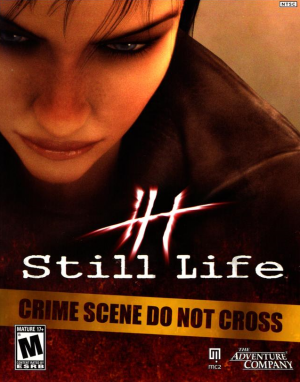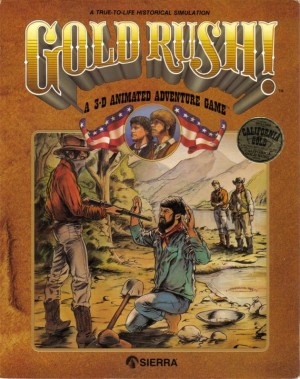Review for Secret Missions: Mata Hari and the Kaiser’s Submarines

Mata Hari doesn't take sides. Even as she prepared to become the deserving star of her own full-fledged adventure, the infamous WWI-era exotic Dutch dancer-turned-spy was quietly working the casual game scene in Secret Missions: Mata Hari and the Kaiser's Submarines. Sneaking a new protagonist in between Sherlock Holmes mysteries, this game is a Frogwares creation, released several months after The Mystery of the Persian Carpet, the developer’s first foray into the “lite adventure” realm. Fortunately, they were clearly months well spent, as the new title is a significant improvement over the great detective’s not-so-great endeavour, though a few of the same weaknesses still linger at times.
Avoiding any reference to those pesky "German spy" allegations against the real Mata Hari, the game's story centers around Mata's attempt to find plans of a German sub attack in 1916, as such proof will draw the Americans into the fray and turn the tide in favour of the Allies. To do so, she’ll need to patch together loose pieces of a map conveniently scattered around Europe that display the location of hidden U-boats, gaining access to their hiding places through manipulative use of her abundance of feminine wiles. It’s a very lightweight premise, and the storyline ends up being almost a non-factor, serving mainly as an excuse to traipse around the globe from France to Spain to Switzerland to Germany (all in the blink of an eye), scour each new location, and get all dressed up.
Yes, in an exercise that has “prime casual game demographic” written all over it, Secret Missions has players dolling Mata Hari up to suit her seductive purposes. Each of the game’s seven supporting characters has weaknesses to exploit with the proper attire, and players must sift through three levels of wardrobe choices (hair, body, and accessories, each filled with many possibilities) to best effect. It’s a perfectly legitimate task, though the game’s two difficulty settings have a hard time finding a happy medium: the easy setting essentially solves the puzzle for you, while the hard setting offers no feedback at all to where you’re going wrong, and the clues you’re provided are often too vague to pinpoint the problem yourself, making the task far more difficult than it has any business being.
Throughout Mata Hari’s fourteen missions, she’ll also need to stay in touch with spy central from her hotel room by sending and receiving encoded messages. Receiving messages means solving a three-part, somewhat-Mastermind-like colour-coding sequence, while sending messages requires completing a complex wire-connection puzzle, always done twice. Each task ramps up in difficulty the farther you go, and though the game’s higher difficulty setting (selected at the start of a new game) doesn’t seem to make the hardest ones harder, it does ensure they get more challenging more quickly.
The rest of the game sends players to static locations filled not with lots of random junk like traditional “hidden object” games, but only with the few extra things you’re required to find in each, all of which are at least loosely connected to the storyline. The search list, generally consisting of five or so objects per screen and doubling as a usable inventory, shows silhouetted items required to move on, and some can only be found by switching to a close-up view or solving a self-contained puzzle first. Fortunately, any item that can’t be found immediately is indicated, preventing you from wasting your time fruitlessly.
Less fortunately, the game imposes some frustrating pixel hunts, sometimes for items and sometimes only for “action” cursors, many of which don’t appear at all until other objectives have been accomplished first. That innocuous-looking statue that yielded nothing of use the first time you checked may just be the key element needed later on. Back on the plus side, unlike its Holmesian predecessor but like any standard adventure, hotspots here become highlighted when you pass the cursor over them, and sometimes you can get lucky. (I’d tell you to get your mind out of the gutter, but Mata does get plenty of offscreen action, so it’s probably right where it needs to be.)
Each mission includes one standalone puzzle to solve, and most of them are pretty entertaining, though for some reason instructions are never offered unless you click the “Help” button (this after some rather intrusive, unavoidable tutorial message boxes dominating the early stages of the game). You’ll encounter the likes of facial reconstruction assignments, pattern identification, a jigsaw, Sudoku, and a few tile-based minigames, plus a boring click-and-slowly-drag (and drag is right) exercise to uncover hidden images. Some puzzles are identical even on the harder setting, while others increase the difficulty somewhat, though always manageably. Any puzzle can be skipped entirely, however, and if there’s a limit to this feature even on the harder setting, I didn’t reach it (through experimentation only, of course). The puzzle variety makes for a nice mix in keeping the gameplay fresh, although to call the relevance of many of them a “stretch” would still be an understatement. In this casual context, however, it works.
Unlike Frogwares’ earlier title, there are no limits to item location hints, either, only a short recharge period for the hint function. This is a much better idea, discouraging over-dependence but not punishing players who need more help than they thought they would at the start of the game. There is no timer running throughout Secret Missions, even during one simulated bomb-defusing sequence, so players can take as much time as they’d like. A score for each mission is tabulated, taking time and the number of hints used into account, but this seems to have no bearing on the game itself.
Production values remain typical Frogwares, with nicely designed interior period locations (if repeated a few times too often) and wonderful orchestration supporting the experience. There are no voiceovers at all, a few too many typos made the cut, Mata's dancing is only ever alluded to between scenes, and the story takes some rather absurd leaps near the end in its haste to seem more substantial than it is, but it’s clear that Frogwares felt more comfortable with the “casual” nature of this game, and the result is a definite step forward. In fact, it’s one of the more enjoyable games to successfully bridge the full-adventure and casual game markets, providing a promising framework to build on in future. The entire game took me only three hours to complete, but the Kaiser’s Submarines managed to deliver twice the enjoyment in half the time of its Sherlockian predecessor, and it’s well worth a look if you’re up for something "lite" from the world of Mata Hari.




























